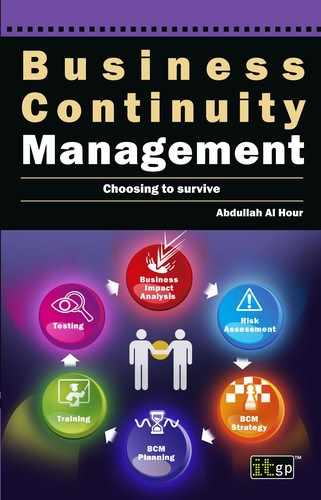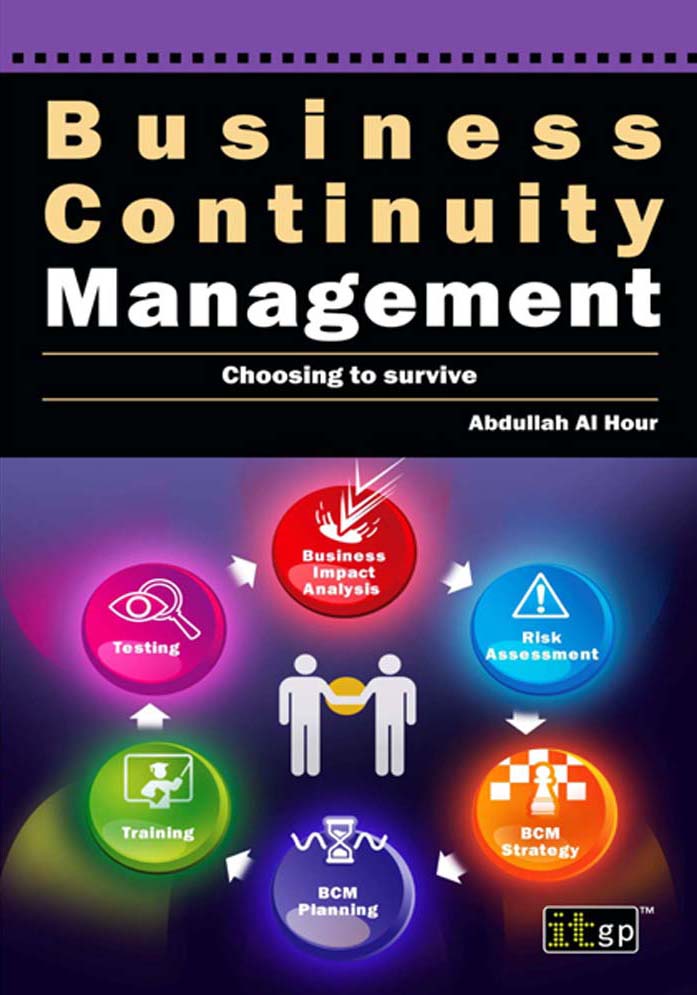- Cover
- Title
- Copyright
- Contents
- Preface
- About the Author
- Acknowledgements
- Chapter 1: Introduction
- Chapter 2: Setting up the BCM Program
- Chapter 3: Running the BCM Life Cycle
- Chapter 4: BCM Standards
- Chapter 5: Technology Continuity
- Chapter 6: Technology Continuity Standards
- ISO/IEC 27031 information technology – security techniques – guidelines for information and communication technology readiness for business continuity (IRBC)
- ISO/IEC 24762:2008 information technology – security techniques – guidelines for information and communications technology disaster recovery sites
- Chapter 7: Facilities Management and Physical Security
- Chapter 8: Evacuation Plans
- Chapter 9: People and BCM
- Chapter 10: BCM Software
- Appendix 1: BCM Policy
- Appendix 2: BIA Questionnaire
- Purpose
- Questionnaire contacts
- Terminology
- Understanding your processes – general process information
- Understanding your processes – internal and external dependencies
- Understanding your processes – impacts and criticality
- Identifying RTO, season, and RPO
- Understanding your processes – IT and resource requirements
- Succession planning – identification of human resources
- Assets required during disaster – identification of recovery resources
- Appendix 3: BIA Report
- Appendix 4: Risk Assessment Questionnaire
- Appendix 5: Risk Assessment Report
- Appendix 6: BCM Strategy Report
- Executive summary
- Introduction
- Key inputs for developing the business continuity strategy
- Objectives of the business continuity strategy
- Methodology
- Overview of the preferred/recommended business continuity strategy for the organization
- Business continuity strategy – crisis management
- Business continuity strategy – processes
- Business continuity strategy – technology
- Business continuity strategy – data and information
- Business continuity strategy – supplies
- Business continuity strategy – people
- Business continuity strategy – facilities and premises
- Business continuity strategy – business continuity management
- Implementation and ownership
- Appendix 7: BCM Plan
- Scope
- Objective
- Team leader contact details and responsibilities
- Team member details
- Activities to be performed immediately after a disaster
- Activities to be performed during disaster recovery
- Relevant locations
- Processes to be performed if IT systems are available
- Processes to be performed if IT systems are not available
- Resource requirements
- List of documents/manuals to be stored off site
- Contact list
- Vendor list
- Sample press release
- Handling a media interview
- Appendix 8: ITDR Plan
- Appendix 9: Evacuation Plan.
- Appendix 10: Test Plans and Forms
- ITG Resources
-
No Comment
..................Content has been hidden....................
You can't read the all page of ebook, please click here login for view all page.

